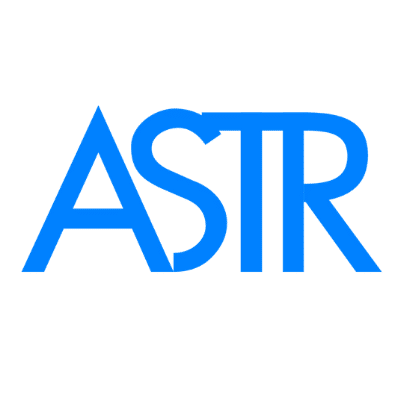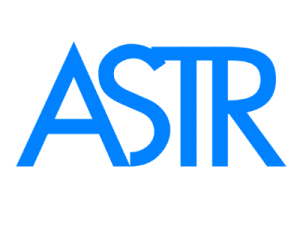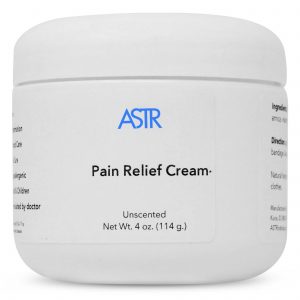Migraine Headache: Symptoms, Causes, Triggering Factors, Types, Healing Cycle & Treatment
Migraine Headache: Symptoms, Causes, Triggering Factors, Types, Healing Cycle & Treatment
Migraine headaches are a common manifestation of underlying neurological conditions. Migraine headache is a chronic and recurrent health ailment that affects 30% of people suffering from headaches. [1] Migraine headaches are a potential hazard to a person’s focus, concentration, and productivity. Over-the-counter analgesic medications and at-home remedies are only good for temporary pain relief. To provide permanent pain relief, therapeutic techniques need to target the underlying cause.
What Are Migraine Headaches?
Migraine is characterized by the onset of unilateral and mild-to-severe headaches. Episodes of migraine headaches have a multifactorial basis. Post-pubertal women are more susceptible to migraine headaches than men. Migraines can be categorized into acute and chronic based on whether the headaches episodes last for less than or more than 15 days each month respectively. Migraines significantly contribute to the global burden of diseases and are responsible for reducing the overall work performance of an individual. [2, 3]
Causes and Triggering Factors of Migraine Headaches
Migraine headaches have a multifactorial etiology. Individuals who have genetic susceptibility make up a significant proportion of migraine patients. Environmental determinants act as triggering factors that precipitate migraine symptoms. These are listed down below in descending order of their prevalence. [4]
- Stress, anxiety, and other mental health disorders.
- Hormonal changes particularly in women. Hormonal changes are more evident during pregnancy and menstruation, hence eliciting migraine headaches during these periods.
- Significant and/or abrupt changes in sleep and appetite.
- Weather changes are associated with approximately 53% of migraine patients.
- Light exposure also elicits migraine headaches.
- Excessive intake of tobacco and alcohol
- Certain foods and culinary ingredients elicit migraine headaches among susceptible individuals.
- Excessive physical activity such as during exercise may trigger migraine headaches.
- Studies also reveal that sexual activity may give rise to migraine headaches in approximately 5% of migraine patients.
Disrupted blood flow towards the brain is a major concern among migraine patients. Poor posture, particularly, forward bending, may compromise blood flow towards the brain and elicit migraine headaches. Moreover, fascial restrictions and spasms of the vertebral artery are also responsible for triggering headaches. The discussion pertains to the fact that the frequency and severity of migraine headaches can be reduced via minimizing exposure to environmental triggers.
Symptoms of Migraine Headaches
The symptoms of migraine headache may last from a few hours to about three days. Common symptoms are mentioned as follows. [5]
- Unilateral mild-to-severe headache
- Nausea and dizziness
- Vomiting
- The skin may appear pale and dull
- Hyperacusis and photosensitivity during migraine attacks
- Blur or disrupted vision
- Sensitivity to smells
- Verlies van eetlust
Types of Migraine Headaches
Migraine headaches are broadly classified into two categories, migraine with aura and migraine without aura. Aura refers to the set of sensory disturbances seen before and/or during migraine attacks. [6]
Migraine With Aura
Approximately one-third of migraine headaches fall into this category. The nature of reversible aura symptoms may be visual, sensory, speech, motor, retinal, or related to the brainstem. The visual symptoms include blind spots, blurry vision, temporary loss of vision, and wavy lines in the visual field.
Migraine Without Aura
This comprises the majority of migraine headaches. Symptoms of migraine without aura include nausea, vomiting, irritability, hypotension, and dark circles underneath the eyes. Patients may also present with photosensitivity and hyperacusis.
Normale genezingscyclus
A primary understanding of the normal healing cycle is essential to acquire knowledge about effective treatments for migraine headaches. The normal healing cycle is composed of three stages – inflammation, proliferation, and maturation.
The inflammation stage
The body recruits inflammatory cells to accumulate at the site of injury. Inflammatory mediators are responsible for causing redness, swelling, pain, and warmth at the site of inflammation. The primary goal of this stage is to eliminate the cause of inflammation.
The proliferation stage
The proliferation stage is characterized by reepithelialization and the formation of new blood vessels. Fibroblasts deposit collagen fibers that serve as a scaffold for healing.
The maturation stage
The maturation stage is marked by the resolution of the healing cycle. During chronic inflammation, the healing cycle goes back and forth between the inflammation and proliferation stages, hence, the resolution is not attained.
Ineffective Treatment for Migraine Headaches
Many at-home remedies and clinical techniques are known for relieving migraine headaches. However, these therapeutic techniques are short-lived and do not target the inflammation or proliferation stages of the healing cycle. Ineffective treatments include ice and heat therapy, electrical stimulation, massaging, foam rollers, stretching of muscles, and strengthening exercises during the inflammation stage. Some of these treatments may worsen the symptoms of migraine headaches.
Treatment for Migraine Headaches
Even though migraine medications provide temporary relief, these drugs are associated with rebound headaches and may even precipitate migraine symptoms. An individual may opt for the following treatment plan to relieve and minimize the frequency and severity of migraine headaches. The patient must remain compliant throughout the treatment for better outcomes.
- Reduce exposure to environmental triggers.
- Maintain a correct posture to maintain adequate blood flow towards the brain and avoid muscular abnormalities.
- Refrain from foods responsible for triggering migraine headaches. This includes alcohol and caffeine.
- An individual can overcome the inflammation stage using the following tools.
- Consumption of an anti-inflammatory diet.
- Restoring vitamin and mineral deficiencies.
- Using the MagnaHeal device, based on the principles of magnetic therapy, to resolve inflammation.
- Myofascial trigger points and fascia adherence may also give rise to migraine headaches. These abnormalities result during the persistent proliferation stage of the healing cycle. [7, 8] Resolution of the proliferation stage involves the following.
- A1 tool releases fascial restrictions of superficial and aponeurotic fascia layers.
- A3 tool releases superficial scar tissue and trigger points.
- A5 tool releases deep scar tissue, trigger points, and restrictions of epimysium, perimysium, and endomysium fasciae.
The patient must remain compliant with the treatment for better outcomes.
Conclusie
Migraine headaches are a debilitating health ailment. Various avoidable environmental triggers shall be considered to minimize the severity and frequency of the onset of headaches. A proper treatment regimen includes reduced exposure to environmental triggers, an anti-inflammatory diet, magnetic therapy, and the release of fascial restrictions, scar tissue, and trigger points. To determine the underlying nutrient deficiencies, one can undergo a short evaluation known as AskASTR. The deficiencies can be restored by using the correct supplements.
Referenties
- https://www.who.int/news-room/fact-sheets/detail/headache-disorders
- https://pubmed.ncbi.nlm.nih.gov/32809622/
- https://www.ncbi.nlm.nih.gov/pmc/articles/PMC4416971/
- https://www.ncbi.nlm.nih.gov/books/NBK560787/
- https://www.ncbi.nlm.nih.gov/books/NBK279373/
- https://www.ncbi.nlm.nih.gov/pmc/articles/PMC6734209/
- https://thejournalofheadacheandpain.biomedcentral.com/articles/10.1186/s10194-018-0913-8
- https://pubmed.ncbi.nlm.nih.gov/30252294/
Migraine Headache Home Treatment

- Snelle resultaten
- De behandeling duurt ongeveer 5 minuten per dag
- Gebruiksvriendelijke medische hulpmiddelen
- Natuurlijke holistische benadering
- Pak de oorzaak van het probleem aan
- Uitgevonden door een arts met chronische pijn
- Ondersteund door meer dan 45 onderzoeken
ASTR uitzonderlijk anders
Recensies verzameld van verschillende websites
sneller genezen




